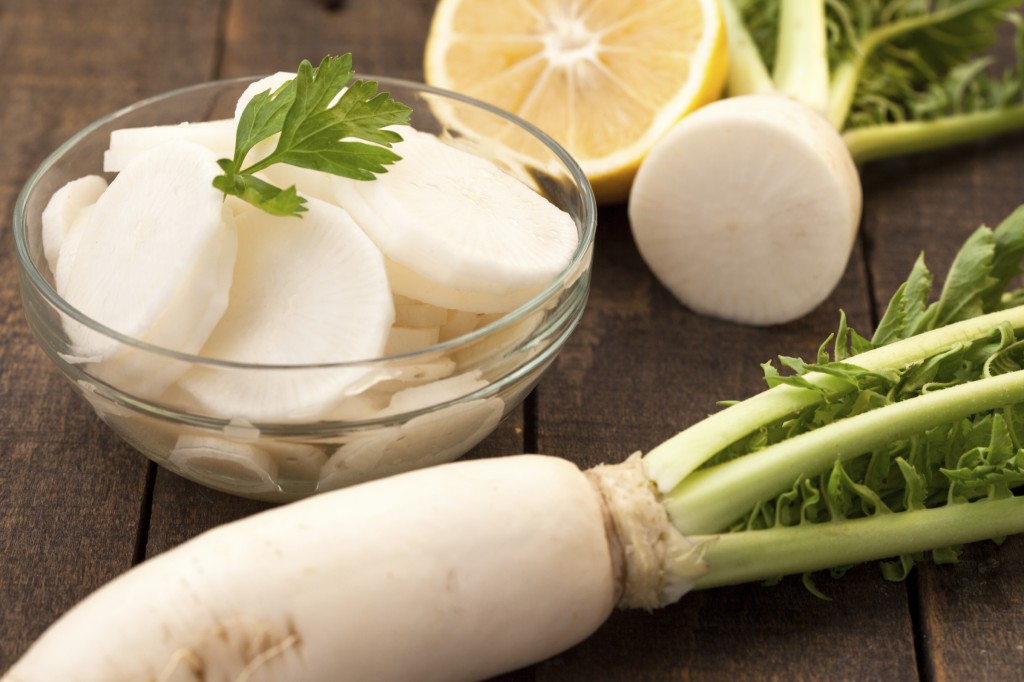China, the exotic land of the Far East, is home to many unusual vegetables, some with even more unusual names. The shape and size of many of China’s native growths can often deter you into cooking with them, but they needn’t pose a challenge. Serve up a Chinese delight and add interesting flavours to your dishes by learning how best to use and cook these vegetables.
Choy sum
Perhaps the most well known of Chinese vegetables and one of the easiest to find in supermarkets or grocery stores, choy sum is a leafy green that makes the perfect addition to a stir-fry or noodle dish.
Translating directly to ‘vegetable heart’, choy sum is packed with calcium and a unique selection of vitamins and nutrients, including vitamins A & C, making it a super healthy vegetable to add to your superfoods group.
Cook and eat it in the same way as asparagus, stalks and all, and marinate with a light garlic sauce or add to a broth to give an extra crunch and light mustardy flavour to a dish.
Bok choy
You’ll find two varieties of bok choy (sometimes labelled as pak choy or bok choi) in supermarkets: the mature kind and baby bok choy. The baby variety offers a sweeter taste and tender texture, whilst mature bok choy is slightly crunchier.
The white and pale green stems and dark leafy green tops are packed with vitamin K, which is essential for maintaining a healthy heart. Its mild flavour makes it best to accompany a dish among other veg, such as in a stir-fry, soup or stew. The cabbage-like vegetable is easy to cook and adapt to your dish so you can’t go wrong.
Use it to accompany a simple Udon Noodle soup or ramen in a vegetable broth with a splash of soy sauce and a boiled egg to top it off. Or add it as a staple to any stir-fry, alongside an array of wild mushrooms and a choice of tofu, duck or chicken.
Snow peas
There are a number of different types of snow peas, also referred to as pea shoots. With their hollow stems, tender leaves and wispy tendrils, snow peas are a simple way of adding some leafy greens to a salad, replacing traditional British garden greens such as rocket and watercress. Garnish with sesame oil for a more Eastern take on a fresh salad.
You can cook the greens for a stir-fry too, or leave them to simmer in a broth to complement other leafy veg for a ramen dish. Dependent on your preferences, offset the dish and add flavour by cooking the snow peas with chilli, garlic, ginger or in a fish broth.
Bamboo shoots
It might seem strange to cook with a plant that is so commonly used to create fences and borders in the modern garden, but bamboo shoots are a common part of many Asian stir-fries, dim sums and soups.
The creamy-coloured, conical shoots are tender to taste, with a slightly crunchy texture that can add a subtle and interesting addition to a dish. Supermarkets usually sell bamboo shoots in a can or packet, readily cut into strips for cooking.
When adding them to dim sums or spring rolls, the shoots are best cut into fine matchstick lengths. Their mild flavour makes them perfect alongside the saltiness of prawns and the tanginess of soy sauce. Or experiment by using bamboo shoots instead of beansprouts in a mushroom and pork ramen dish.
Enoki mushrooms
 The bizarre, ethereal quality of enoki mushrooms may dissuade you from using them in cooking, but the spidery, white fungi are a must for ramen and soup dishes. Separate the mushrooms from the main cluster and cook the full length of the stalks up to the stem.
The bizarre, ethereal quality of enoki mushrooms may dissuade you from using them in cooking, but the spidery, white fungi are a must for ramen and soup dishes. Separate the mushrooms from the main cluster and cook the full length of the stalks up to the stem.
With a mild and slightly fruity taste, and a crisp texture, the mushrooms are ideal when paired with other wild mushrooms, offering a plethora of tastes. Enjoy them alongside bigger, meaty mushrooms such as matsutakes and shiitakes, and substitute meat for tofu to create a classic vegetarian dish
Enoki mushrooms are purchased in a cellophane-wrapped tray or vacuum-sealed pack. They aren’t usually grown outside of Asia though so you may have to look for these in specialist supermarkets.
Oriental root radish
 There are so many kinds of Oriental root radishes, identified by their long white appearance that resembles a carrot. Daikon (literally ‘big root’) is one of the most well known varieties. The mild winter radish is often pickled or added as thin shreds to stir-fry dishes.
There are so many kinds of Oriental root radishes, identified by their long white appearance that resembles a carrot. Daikon (literally ‘big root’) is one of the most well known varieties. The mild winter radish is often pickled or added as thin shreds to stir-fry dishes.
The traditional Chinese savoury dessert, Turnip Cake, is perhaps the most popular use of Daikon. It’s served in many dim sum houses and is relatively simple to make at home.
A special dish for Lunar and Chinese New Year across Hong Kong and Southern regions of China, Turnip Cake is particularly important in Chinese celebrations, as ‘turnip’ is a homophone for ‘good fortune’.
The cake is made by mixing the shredded radish with mushrooms, scallions, diced sausages and dried shrimp in a batter of rice flour, vegetable oil, cornstarch and sugar. The mixture is then steamed for half an hour before being fried and served with a chilli or Hoisin sauce. The light, fluffy texture should resemble that of an omelette.
Chinese vegetables really do offer versatility to a number of dishes and are so easy to cook, whether fried or steamed. Don’t be daunted by their unusual appearance or name as many can be used to replace ordinary staples in dishes.




